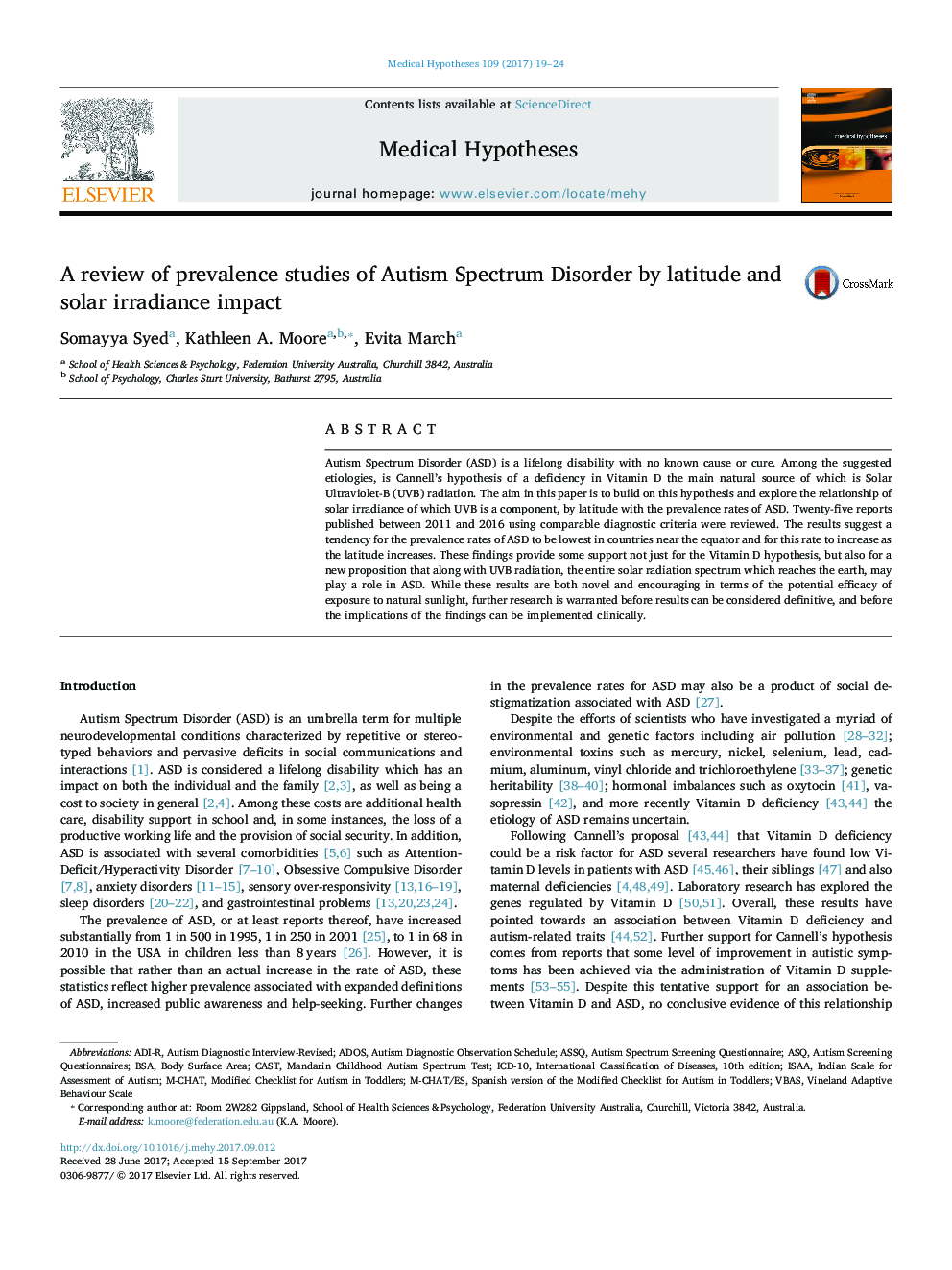| کد مقاله | کد نشریه | سال انتشار | مقاله انگلیسی | نسخه تمام متن |
|---|---|---|---|---|
| 5548300 | 1556536 | 2017 | 6 صفحه PDF | دانلود رایگان |
Autism Spectrum Disorder (ASD) is a lifelong disability with no known cause or cure. Among the suggested etiologies, is Cannell's hypothesis of a deficiency in Vitamin D the main natural source of which is Solar Ultraviolet-B (UVB) radiation. The aim in this paper is to build on this hypothesis and explore the relationship of solar irradiance of which UVB is a component, by latitude with the prevalence rates of ASD. Twenty-five reports published between 2011 and 2016 using comparable diagnostic criteria were reviewed. The results suggest a tendency for the prevalence rates of ASD to be lowest in countries near the equator and for this rate to increase as the latitude increases. These findings provide some support not just for the Vitamin D hypothesis, but also for a new proposition that along with UVB radiation, the entire solar radiation spectrum which reaches the earth, may play a role in ASD. While these results are both novel and encouraging in terms of the potential efficacy of exposure to natural sunlight, further research is warranted before results can be considered definitive, and before the implications of the findings can be implemented clinically.
Journal: Medical Hypotheses - Volume 109, November 2017, Pages 19-24
